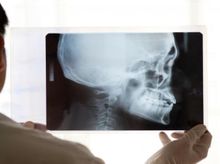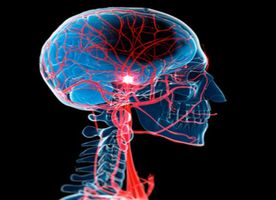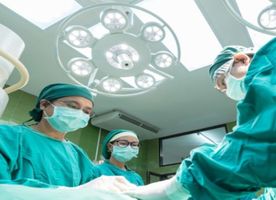Cranioplasty in Calle Max Planck
Search and Compare the Best Clinics and Doctors at the Lowest Prices for Cranioplasty in Calle Max Planck





















































































































































No Time?
Tell us what you're looking for and we'll reach out to the top clinics all at once
What does a Cranioplasty Procedure Involve?
The *TreatmentProcedureprocedure involves detailed surgical work centred primarily on the skull. Sometimes, it's likened to a reconstruction effort initiated to rectify a damaged or defective part of the skull. The steps followed in the procedure are meticulously planned and executed.
Typically, the surgery begins with general anaesthesia to ensure the patient is completely sedated. The surgeon then makes a small incision to access the area of the skull that needs repair or reconstruction. This is followed by securing a custom-made plate, often made of titanium, into the defect or 'hole' in the skull using miniature screws.
The plate is tailored to match the shape and size of the gap in the skull, thereby allowing an impeccable fit. If the damaged part is too large to replace immediately, artificial or bone graft materials might be used to support the surrounding tissue and facilitate healing.
Once the necessary repair work in the skull is completed, the surgeon meticulously closes the incision with stitches or staples. The operation usually takes about two to three hours in total, but this can vary widely based on the extent and complexity of the repair work needed.
After the procedure, the patient is closely observed in a recovery area before being transferred to a hospital room. A clinical team will monitor them for any potential adverse effects and manage their pain effectively.
Despite the impressive finesse involved in the cranioplasty procedure, it is essential to remember that it is a form of surgery, complete with its own set of risks and benefits. Therefore, it's always crucial to have an in-depth discussion with the surgeon before deciding to proceed.
What is the cost of Cranioplasty in Calle Max Planck?
When it comes to undergoing a Cranioplasty in a specific area, for example, Calle Max Planck, the cost is one of the vital elements to consider. While the costs can fluctuate depending on various elements such as the hospital, surgeon's experience, and the complexity of your case, one must not forget what's at stake here.
Even though the financial aspect is essential, the quality of the healthcare and the well-being offered cannot be assessed in monetary terms. Choosing a top-tier medical facility with an expert medical team should always be prioritized over cost considerations.
How Long Should I Stay in Calle Max Planck for a Cranioplasty Procedure?
Discussing the duration of stay in AreaName for a Cranioplasty procedure, expect a hospital stay of anywhere between 2-7 days post-procedure for crucial, intensive care, followed by an additional period of approximately 1-2 weeks in the area for follow-up appointments and to cater to any unexpected medical attention that might be required.
This translates to a typical stay of almost 2 to 3 weeks in total. Understandably, staying far away from home for such a duration might sound unsettling, but allay your fears with the knowledge.
What's the Recovery Time for Cranioplasty Procedures in Calle Max Planck?
In the realm of Cranioplasty procedures in Calle Max Planck, one can anticipate a recovery period that generally spans from a few weeks to a few months. This estimation is perniciously nebulous, dictated by myriad factors such as the patient's overall health, age, and the complexity of the surgical procedure itself.
It is perfectly normal to feel trepidation about this journey towards restoration, as the path might be strewn with discomfort and recuperation could appear ostensibly protracted. However, it is vital to remember that time, patience, and expert care are your allies in this process.
What sort of Aftercare is Required for Cranioplasty Procedures in Calle Max Planck?
Your medical team will give you post-operative instructions that you need to follow. It is vital that you follow the instructions carefully. Since Cranioplasty can be performed to treat various conditions, the post-operative instructions can vary from one person to another. In general, you may need to:
-
Do not lie flat when you rest or sleep. Try to raise your head by using a wedge pillow or a rolled towel under your pillow.
-
Bring your head up slowly after lying down to prevent headaches or dizziness.
-
Try to walk every day and increase the amount you walk bit by bit. Walking helps prevent pneumonia and constipation. It also boosts your blood flow.
-
Do not drive until your doctor gives you the okay.
-
Be safe with medicine and take them exactly as prescribed.
-
Keep the surgical site clean and dry.
If any of the aftercare above is different from what your doctor told you, follow your doctor’s instructions.
What's the Success Rate of Cranioplasty Procedures in Calle Max Planck?
Cranioplasty is a generally safe procedure when performed by experienced surgeons. However, it has 15 to 41% complication risks. It is still unclear why it has a high risk of complications compared to other neurosurgical operations. Older patients and male patients have higher rates of complication.
The possible risk of complications that can occur after cranioplasty includes bone flap resorption, bacterial infection, hematoma, wound dehiscence, seizures, cerebrospinal fluid leakage, and hygroma.
How should I prepare for the Cranioplasty Procedure in Calle Max Planck?
Preparation should begin with a thorough discussion with your medical team, understanding the nuanced specifics of the surgical procedure, and the potential risks involved. Ensure that you select a reputed medical facility with a track record of successful Cranioplasty procedures. It is also important to achieve a balance between physical and emotional readiness. This means attending to your physical health ensuring adequate rest, nutrition, and completion of pre-operative tests, but also taking the time to mentally prepare, perhaps with the assistance of a professional counsellor.
Are there Alternatives to Cranioplasty Procedures in Calle Max Planck?
Yes, there are alternatives to Cranioplasty procedures in Calle Max Planck and it is common for patients to encounter some measure of disquiet, owing to the overwhelming nature of the surgical discourse. Rest assured, you are not without recourse. Alternatives may span the spectrums of non-surgical therapies such as wearing a protective headgear, to less invasive surgical procedures such as the use of 3D printed custom made implants.
Each alternative carries with it its own benefits, risks, and prognosis — factors contingent upon the nature of the injury, the patient’s health status and unique medical considerations. It remains indispensably critical to consult with reputed neurosurgeons, leverage their expertise, and discuss viable options suited to your individual case.
What Should You Expect Before and After the Cranioplasty Procedure?
Prior to the procedure, expect exhaustive medical examinations designed to ensure your body's readiness for the impending intervention - a meticulous rehearsal of the tenuous dance between scalpel and skin. Post-surgery, the convalescent period will often be accompanied by mild pain, swelling, and discomfort during the initial weeks - a testimony to your body's resilience and irrefutable healing force at work.
What are the benefits of Cranioplasty Procedure in Calle Max Planck?
Indeed, Cranioplasty procedures in Calle Max Planck are accompanied by several advantages which chart an idyllic prospect of renewal and regeneration. Physically, it reinstates the protection of your brain from external injuries and restores the aesthetics of the skull structure - an oft-underestimated element linked to one's self-esteem and overall sense of 'normalcy'.
Additionally, it has been observed that Cranioplasty can alleviate 'syndrome of the trephined' - neurological symptoms associated with skull defects. The benefit lies not just in the procedure, but also in the care that follows—the very canvas upon which a reputable medical facility etches its signature.
Are there any risks or complications associated with the Cranioplasty Procedure in Calle Max Planck?
Despite the profound benefits one can reap from a well-executed Cranioplasty procedure, one must tread with due cognizance of the potential risks or complications. These may encompass surgical site infection, implant migration or seizure susceptibility post-operation.
But again, apprehension should not eclipse hope. With the evolution of medicine, these risks are continuously mitigated - thoroughly disarmed by steadfast care, stringent sterilization norms, and sophisticated surgical techniques wielded by the experienced hands of proficient neurosurgeons.
This information has been accurately sourced and verified by a medical professional for its accuracy, however, we strongly recommend you to consult with your doctor before pursuing medical procedures overseas.













